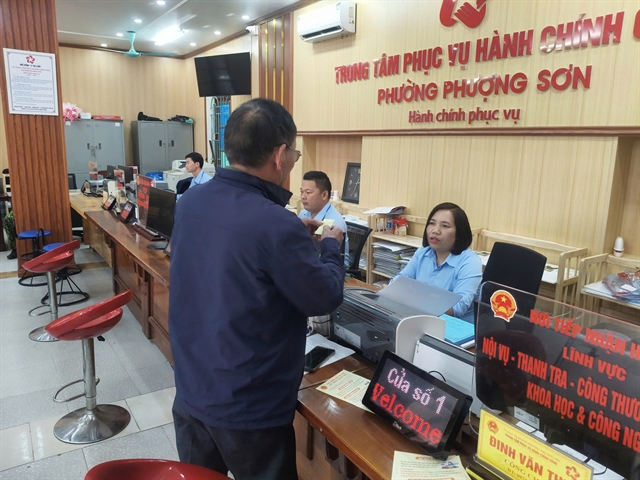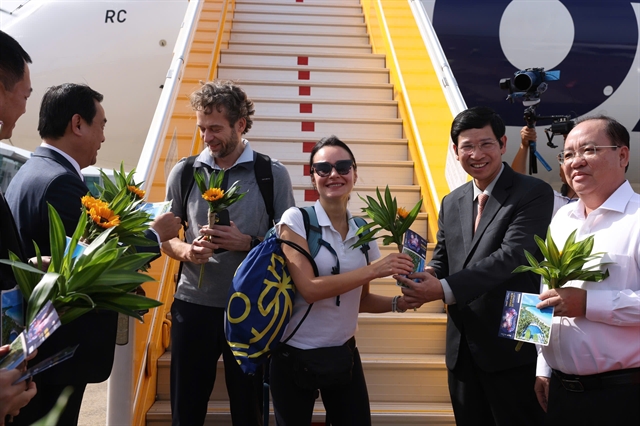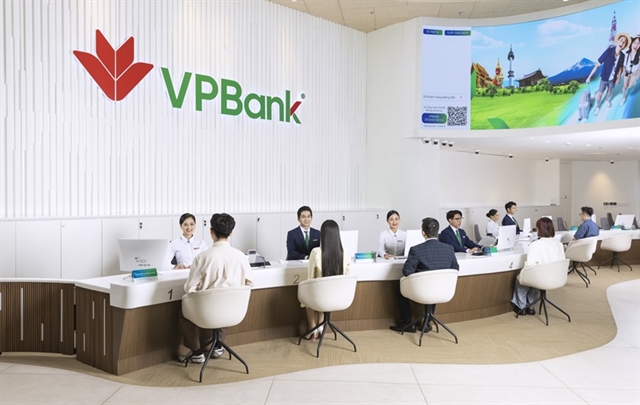 Economy
Economy

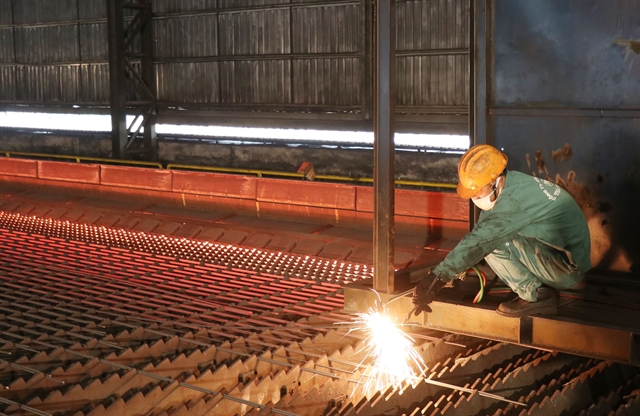
|
| Steel manufacturing is among the industries subject to greenhouse gas inventory reporting in Việt Nam. — VNA/VNS Photo Hoàng Nguyên |
Nhật Hồng
HÀ NỘI — As carbon taxes and credits become more prevalent across markets around the world, Việt Nam is seeking ways to demonstrate its responsibility in decarbonisation and help local businesses adapt to change.
An official circular on measuring greenhouse gas emissions (GHG) is expected to be released this November, taking Việt Nam a step closer to its target of net-zero emission in 2050.
The circular, led by the Ministry of Industry and Trade (MoIT), will be followed by training courses for businesses to comply with GHG control, in order to limit the carbon footprints throughout the supply chain.
The measurement, reporting and verification of GHG mitigation will be mandatory in 2025 for applicable industries including steel, cement, aluminium and fertiliser production, said deputy head of MoIT’s Climate Change and Green Growth Office Hoàng Văn Tâm.
The move is seen as part of Việt Nam’s bigger response plan to changes in the carbon tax regulations already initiated across the world - one of the most notable being the Carbon Border Adjustment Mechanism (CBAM) introduced by the European Union (EU).
Việt Nam’s steel industry saw significant growth in exports to the EU, especially with the EU-Việt Nam Free Trade Agreement (EVFTA) taking effect in August 2020.
According to the Vietnam Steel Association (VSA), as of June 2020, steel exports to the EU accounted for only 3.4 per cent of the total steel export turnover. After two years, this figure rose to 20.51 per cent.
In the first six months of 2023, Việt Nam exported nearly 1.4 million tons of steel to the EU.
“The global carbon pricing policies, including the CBAM, signal to all businesses in Việt Nam, large or small and medium, that they have to think about reducing emissions and carbon footprints in their production and supply chain,” said Tâm.
The mechanism puts a price on the emissions released during the production of goods that are entering the EU, ensuring that the carbon prices of imports match those of production within the union.
The purpose of this tool is to prevent ‘carbon leakage’, which happens when EU-based companies relocate their carbon-intensive production to other locations with less stringent climate regulations.
Jennifer Pham, Regional Sustainability Advisor at the Danish Embassy in Việt Nam, explained the mechanism: “It ensures that sustainability doesn't become a barrier for businesses that are operating in the EU where there are higher, stricter requirements on environmental friendliness, or become a negative factor in a business's ability to compete on the market.”
“There is also the hope that through measures used in CBAM, we are able to encourage local climate action and create incentives necessary for businesses or governments elsewhere to also implement similar targets,” she added.
Pham also noted that a period of transition is necessary and there will be certain challenges in the administration behind CBAM compliance.
The type of carbon recording, for example, that’s going to be required as part of CBAM is new not only to the companies in Việt Nam but also to many in the EU, she said.
“That is definitely one of the challenges that we're looking into as we're moving forward with the implementation,” said Pham.
Phạm Ngọc Tiến, Vice President of the Foreign Trade University in Hà Nội, said that the EU is the only one applying CBAM at the moment, and therefore, producers and exporters of carbon-intensive products may divert their supply to other markets to avoid the carbon taxes.
However, this will no longer be possible when CBAM or other similar mechanisms become more prevalent, then the impact will be massive, he said.
It is not only manufacturing businesses that are preparing for carbon reduction. The aviation industry, for instance, has seen several decarbonisation initiatives.
In October 2022, the International Civil Aviation Organisation (ICAO) set out its “long-term aspirational goals”, that all the members agree to reach net-zero carbon emission in 2050.
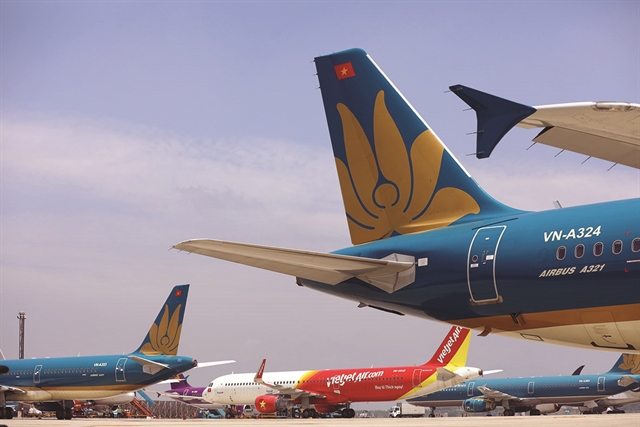
|
| Aviation accounts for a relatively small share of global emissions but is one of the most challenging sectors to decarbonise, according to the International Energy Agency. — VNA/VNS Photo Huy Hùng |
Countries across the EU have also been taking action to limit short-haul flights where railway routes are available in an effort to reduce the region’s carbon emissions.
France has banned flights where train alternatives of 2.5 hours or less are available, while Germany doubles the taxes on short-distance flights.
Aircraft manufacturer Airbus said that it commits to reducing carbon emissions by 63 per cent by 2030, and fuel emitted through flights by 43 per cent by 2035, according to Helene Burger, head of International Cooperation and Sustainability for Airbus Asia-Pacific.
Nguyễn Quang Trung, corporate planning and development director of the flag carrier Vietnam Airlines, noted that new-generation aircraft can help reduce fuel consumption, but the high number of flights coupled with the amount of time needed for new technology to be widely available may hinder the effort.
The major contributor to reducing carbon emissions is expected to be sustainable aviation fuel (SAF), which studies have found to contribute 60 per cent to decarbonisation innovations, he said.
Trung added: “But we need a lot of research and innovation to reduce the cost of SAF production and to increase the quantity of SAF.
“SAF now only makes up one per cent of aviation fuel, and the price of SAF is often two to four times higher than the current fuel.”
SAF distribution and production are also not yet available in Việt Nam, he said.
Tâm, the deputy head of MoIT’s Climate Change and Green Growth Office, believed that international resources, particularly technical support, are essential for Việt Nam in the future.
"I think the biggest issue here is about finance and technology, which provide businesses at the grassroots level opportunities for energy transition and decarbonisation in the short, medium and long term," said Tâm.
Recent survey data from Việt Nam General Statistics Office revealed that small and medium-sized enterprises (SMEs) account for over 97 per cent of the total number of businesses in Việt Nam.
Florian Beranek, executive board member of the Central and Eastern European Chamber of Commerce in Vietnam (CEEC), believes that whether the topic is called ESG (environmental, social, and corporate governance), CSR (corporate social responsibility) or business ethics, the core is all about integrity.
“I would highly recommend everybody who is in business to first come back to your common sense, to your natural radar of morality of ethics, and then make your business decisions.
“If you do so you don't have to worry about all these requirements,” he said.
Beranek has been based in Việt Nam since 2009, when he came to the country as an advisor to a project of UNIDO (United Nations Industrial Development Organisation) which helped local SMEs, mostly in textiles, footwear and electronics, adapt and adopt CSR.
“I think it is so important that the EU is making efforts together with European and Vietnamese companies directly in supporting programmes to enable them to manage this channel of regulations.
“It is a challenge, but at the end of the day it’s about doing things right, and then you don't have to fear that it's a burden.” — VNS



